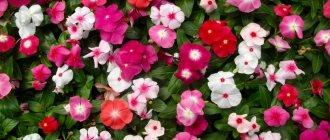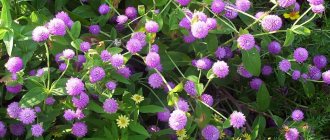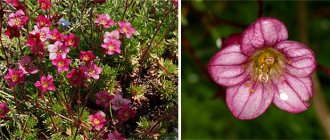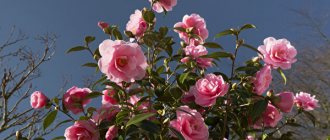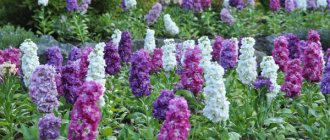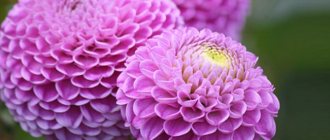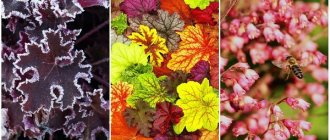Author: Elena N. https://floristics.info/ru/index.php?option=com_contact&view=contact&id=19 Category: Garden plants Published: February 10, 2019Last edits: November 03, 2020
- When to plant
- Growing conditions
- How and when to collect seeds
- Winged Thunbergia (Thunbergia alata)
liana (lat. Thunbergia) belongs to the genus of flowering plants of the Acanthaceae family, native to the tropics of Africa, Madagascar and southern Asia. There are about two hundred species in the genus. The Thunbergia flower received its scientific name in honor of the Swedish naturalist, researcher of the flora and fauna of Japan and South Africa, Carl Peter Thunberg. Thunbergia, or black-eyed Suzanne, as Europeans call it because of the dark purple, almost black eye in the middle of the flower, is cultivated both as a garden and as a houseplant.
Planting and caring for thunbergia
- Planting: sowing seeds for seedlings - at the end of winter or early spring, transplanting seedlings into the ground - in the second half of May.
- Flowering: abundant, from mid to late summer.
- Lighting: partial shade.
- Soil: nutritious, well-drained, containing lime, neutral reaction.
- Watering: moderate, during flowering – abundant. During drought, evening spraying is also recommended as needed.
- Feeding: once a month with a solution of mineral fertilizer.
- Garter: it is advisable to hang the plant on a wire or lattice.
- Reproduction: seed.
- Pests: aphids, whiteflies, spider mites and scale insects.
- Diseases: fungal, due to excessive soil moisture and poor air circulation.
Read more about growing thunbergia below.
Diseases and pests
Thunbergia has good immunity to disease, but insect pests appear on the vine quite often.
The most common plant disease is a fungal infection. The reason for its appearance is excessive watering. Proper agrotechnical care is the best prevention of the disease. When the first signs of the disease appear, remove and destroy the affected foliage and flowers. Spray the bush with fungicides. A weakened flower needs to be fed with complex fertilizer.
Thunbergia is often attacked by spider mites. The pest multiplies quickly. In case of minor damage, the insect can be washed off the foliage with a soap solution (frequency – once every 3 days). With a large infestation, the pest cannot be controlled without chemicals. For preventive purposes, it is recommended to irrigate thunbergia, since the tick does not like a humid environment.
Whiteflies and scale insects can cause damage to the vine. In this case, the shrub needs to be treated with “Fitoverm” or “Aktellik”. The frequency of treatment is as follows: 3-4 times every 7-10 days.
Botanical description
The thunbergia plant can be a vine or shrub with whole heart-shaped or ovate, as well as lobed opposite leaves with soft pubescence from 2.5 to 10 cm in length, in some species the edges of the leaves are serrated. Funnel-shaped beautiful thunbergia flowers up to 4 cm in diameter on long stalks, solitary or collected in inflorescences, have different colors - white, blue, indigo, violet, lilac, purple, yellow, orange or brown. There is even Thunbergia red. In some species and varieties, the flowers emit a strong aroma. Thunbergia blooms from July to the end of September.
In nature, Thunbergia is a perennial plant, but in our climate, growing Thunbergia in open ground as a perennial plant is impossible due to our cold winters, so Thunbergia climbing is cultivated as an annual plant and is often used for vertical gardening, since if there is support it grows up to two meters in height. height. But ampelous thunbergia is successfully grown as a perennial at home or in greenhouse conditions.
In landscape design
Options for landscape design using thunbergia are varied.
The fast-growing vine is a real decoration for gazebos and pergolas. Green leaves and bright flowers will not only please the eye, but will also protect from the hot rays of the sun.
The liana will decorate the wall of any unsightly building and decorate a compost heap with its greenery. Summer residents love to plant thunbergia along fences, turning them into flowering walls. Used as a “carpet” in inaccessible corners of a personal plot, on slopes. Ampel varieties of plants are planted in hanging pots, flowerpots and wicker baskets, decorating terraces, balconies and loggias.
Thunbergia goes well with other climbing plants - ivy, morning glory, climbing azarina. The plant will delight you with green foliage and an abundance of flowers until late autumn, while maintaining its decorative value.
Growing thunbergia from seeds
How to sow seeds
Seed propagation of thunbergia occurs in late winter or early spring. The seeds are treated with epin or fumar and sown in containers with moist soil consisting of turf soil, peat and sand (or leaf soil, sand and humus) in equal proportions, sprinkled with a thin layer of soil, which is carefully moistened. To create a greenhouse effect, the crops are covered with glass or film and placed on a warm, well-lit windowsill, where direct sunlight does not reach. It is very important to ensure that the soil is slightly moist at all times.
- What flowers to sow in February - 18 annuals, which are sown throughout the month!
The temperature for successful seed germination is 22-24 ºC. If all conditions are met, the seeds will begin to germinate within a week, and then the coating can be removed.
Seedling care
If the seedlings sprout densely, then when two true leaves appear, they need to be plucked or thinned out, leaving the strongest specimens in the container. When the seedlings reach a height of 12-15 cm, in order to enhance branching, the tops of the seedlings are pinched. If you want a powerful and dense green mass, feed the seedlings once a week from the moment of picking with nitrogen-containing fertilizer, but if you are hoping for lush and long-lasting flowering, do not fertilize the seedlings at all. For those who do not want to bother with picking thunbergia, it is better to sow it not in containers or boxes, but in peat cups with three seeds each.
How to collect thunbergia seeds
Oval brown grains with a rough surface ripen in a dried seed pod. Their size is 4 mm.
The seeds will ripen by the time the containers spontaneously open. To collect thunbergia seeds, these boxes should be cut off a couple of days before they open.
. The contents of the seed pods are poured onto a paper sheet and allowed to dry. Grains are sent for storage in paper envelopes.
On a note!
The ability to germinate in thunbergia seeds remains for two years.
Thunbergia in autumn, collecting seeds - video
Planting thunbergia
When to plant
When the last spring frosts have passed, it is time to plant seedlings in open ground. Find a shaded and wind-protected place for the thunbergia on the south, east or west side. Thunbergia prefers neutral, nutritious, well-drained, calcareous soil, therefore, if necessary, add lime to the area to be dug in advance.
How to plant
Thunbergia is planted in such a way that a distance of 30 to 45 cm is maintained between specimens. Before planting Thunbergia, you need to install supports for it - wires or gratings along which the vine will crawl up or to the sides. After planting, the area is watered. Thunbergia blooms from seeds usually one hundred days after pinching.
Where and how it is used
Due to the climbing properties of the stems, this plant is widely used in garden design. Thunbergia grows well and quickly gains green mass, entwining fences or trellises with shoots of rich color. And the “highlight” of such a hedge is the flowers of various bright shades, which contrast favorably with each other and add an element of completeness to the decoration.
In addition to decorative functions in landscape design, this plant is also used in traditional and folk medicine, as well as cosmetology:
- as an antipyretic and wound healing agent,
- to normalize water-lipid balance,
- to remove toxins from the body,
- as raw material for bioactive additives,
- to slow down the aging process, smooth out wrinkles, etc.
If you are interested in other vines, as well as the peculiarities of their cultivation, read articles by our experts about the amazing Tolmia, the unpretentious Setcreasia Violet, the spectacular Raphidophora, the magnificent Eschinanthus, the girlish grape Parthenocissus, the fluffy Cyanotis, the fast-growing Philodendron, the pretty Saxifraga and the lovely Reo.
"Thunbergia" is an evergreen flowering vine. The plant loves sunlight, additional fertilizing, frequent watering and spraying. Can grow in indoor conditions, greenhouses and botanical gardens. When planted in open ground it is an annual.
Thunbergia care
Growing conditions
Thunbergia care is simple. The plant should be watered moderately, and from the beginning of flowering, watering should become plentiful, otherwise thunbergia will begin to shed not only buds, but also leaves. In dry summers, the plant will gratefully respond to spraying with water in the evening. Mandatory feeding is carried out during the budding period, and throughout the spring-summer season, thunbergia is fertilized monthly with liquid mineral fertilizers, observing the golden rule: everything is good in moderation. Remove weak shoots and faded flowers, and point the thunbergia in the right direction in time.
As you can see, even a beginner can plant and care for thunbergia.
- How and when to plant dahlias in the garden
Pests and diseases
Most often, thunbergia is oppressed by spider mites, scale insects and whiteflies, and sometimes it suffers from aphids. All these pests are destroyed by spraying the plant with preparations such as Actellik and Fitoverm, and the break between treatment sessions, which can be no more than four, is a week or a week and a half. Sometimes thunbergia suffers from fungal diseases, which are treated with fungicides; the affected leaves and flowers should be removed.
It may happen that mold appears on the stems, shoots and leaves of thunbergia, this indicates that you have overdone the watering. And sparsely growing foliage indicates that you have chosen a too shady place for thunbergia - it does not have enough light.
Home care
Actions after purchase
You should not buy a plant in winter.
Since at this time the plant enters a dormant period, and it can shed leaves abundantly.
In winter, the flower requires special temperature conditions and careful care.
Many buyers, faced with numerous problems, throw the plant outside.
Therefore, it is recommended to buy perennials in spring or summer.
Trimming
When forming, it is necessary to remove weak stems and wilted flowers. During the growth of this representative of the flora, it is necessary to direct it in the right direction. For this purpose, supports and wires are used. Do not use rusty material. Oxidation can negatively affect the health of the plant.
Watering
The plant prefers moderate watering. But from the beginning of flowering in mid-July it increases sharply. During this period, the flower needs additional moisture.
Otherwise, this representative of the flora will begin to shed leaves and unopened buds. Flowers may begin to fall off. In hot weather, your pet loves frequent spraying from a spray bottle. The procedure is best carried out in the evening.
Transfer
Transplantation is carried out only when growing at home.
It is necessary to choose containers that are large in diameter.
The soil is used purchased for home flowers or decorative cacti.
It is important that the soil allows air and water to pass through well. Drainage made of natural stones or expanded clay is poured onto the bottom. Black soil is poured and the plant is installed. Water generously.
Important! You can fertilize with nitrogen-containing fertilizers. Application period: once every 14 days.
But during the flowering period, feeding the plant is prohibited. This will negatively affect active growth and abundant flowering.
Temperature
The plant is very thermophilic. Grows well at a temperature of 23°C.
In winter, the temperature should not fall below 15°C. The flower loves moist air. In hot weather, you can place a container with water or moistened moss next to it. The plant prefers well-ventilated areas.
Lighting
The plant loves bright natural light. Cannot stay in the sun for long. In winter, it prefers additional artificial lighting.
Thunbergia after flowering
How and when to collect seeds
When the flowering of thunbergia is completed, instead of flowers, fruit-boxes with seeds are formed on it, and they need to be collected before they open and the contents spill onto the ground. Indoors, the boxes are opened, the seeds are poured onto paper and dried, and then stored in paper bags or cardboard boxes. Thunbergia seeds do not lose their germination for two years.
Thunbergia in winter
The liana that you grew in open ground will be disposed of in the fall, since it will not survive our winter, even the warmest. But if you grew thunbergia in a large pot or tub, then cut off all the shoots for the winter, leaving 4-5 buds on each, treat the cuts with a solution of potassium permanganate, bring the plant into the house, place it in a cool place where the temperature is not higher than 15 ºC, and let it wait there until spring, and you will only have to lightly moisten the top layer of soil in the pot from time to time.
Transplanting thunbergia into open ground
Seedlings grow very quickly; if the material is grown from the end of summer, the plant is placed on the site with the first buds. Therefore, it is very important that the plant quickly adapts to the new environment. Thunbergia is planted at the end of May and covered at night until mid-June. When the weather becomes stable, there will be no need for shelter.
For the crop, an area in partial shade on the western side is allocated; the vine is not drought-resistant; humidity is more important for it, not the sun. The plant should not be grown in acidic or heavy soils; the soil should be light, aerated, and neutral.
Landing algorithm:
- The area is dug up, superphosphate, compost and ash are added.
- The recesses are made according to the volume of the root.
- The distance between seedlings is 0.5 m.
- The seedling is covered with soil and watered.
After planting, a trellis is installed, taking into account that the vine grows not only upward, but also to the sides.
Types and varieties
Thunbergia species grown in cultivation are divided into shrubs and vines. Thunbergia lianas are represented by the following species:
Winged Thunbergia (Thunbergia alata)
The same black-eyed Suzanne who was described above. Growing winged thunbergia was the basis for the chapter on caring for thunbergia. Thunbergia winged blooms in August-September. In culture - since 1823. Varieties:
- thunbergia Susie - variety series with flowers of different colors: Susi Weib mit Auge - white thunbergia, Susi Orange mit Auge - with bright orange flowers, Susi Gelb mit Auge - with yellow flowers;
- African Sunset – terracotta thunbergia, blooming throughout the summer;
- thunbergia Gregor - a group consisting of 15 varieties of all shades of orange, which do not have an eye in the middle of the flower, but this does not make them look less attractive;
Thunbergia grandiflora, Thunbergia grandiflora, Thunbergia blue
A powerful herbaceous plant native to India with climbing shoots, broad oval bright green leaves reaching a length of 15-20 cm, with large teeth along the edges and pubescence on the underside of the leaf blade. Blue or purple flowers up to eight centimeters in diameter with a white spot in the throat are collected in racemose, few-flowered inflorescences;
- Professional advice on caring for wisteria (video)
Thunbergia fragrans
An evergreen vine from Australia and Southeast Asia, reaching a length of six meters. Its leaves are opposite, ovate, with a pointed tip, dark green on the upper side of the plate and light green with a white midrib below. White large single flowers, wide open, up to 5 cm in diameter, with two bracts, have a pleasant aroma;
Thunbergia battiscombei
With wide leaves, blue flowers with a clearly visible mesh on the petals.
In addition to those listed, the following thunbergia vines are also grown in cultivation: laurel leaf, related, mizoren.
Among the shrub species, Thunbergia erecta, Natal, and Vogel's are cultivated.
Growing problems
The liana is resistant to diseases and insect pests. Long-term improper care can cause the plant to become infected with disease. If the rules of plant care are violated, gardeners may encounter the following difficulties:
- stagnation of moisture leads to the development of rot;
- lack of sunlight inhibits the growth and flowering of thunbergia;
- spots on the leaves appear as a result of high humidity and lack of fresh air.
If aphids, spider mites or whiteflies are found on the surface of the leaves and stems, the vine should be treated with a special insecticidal solution.
